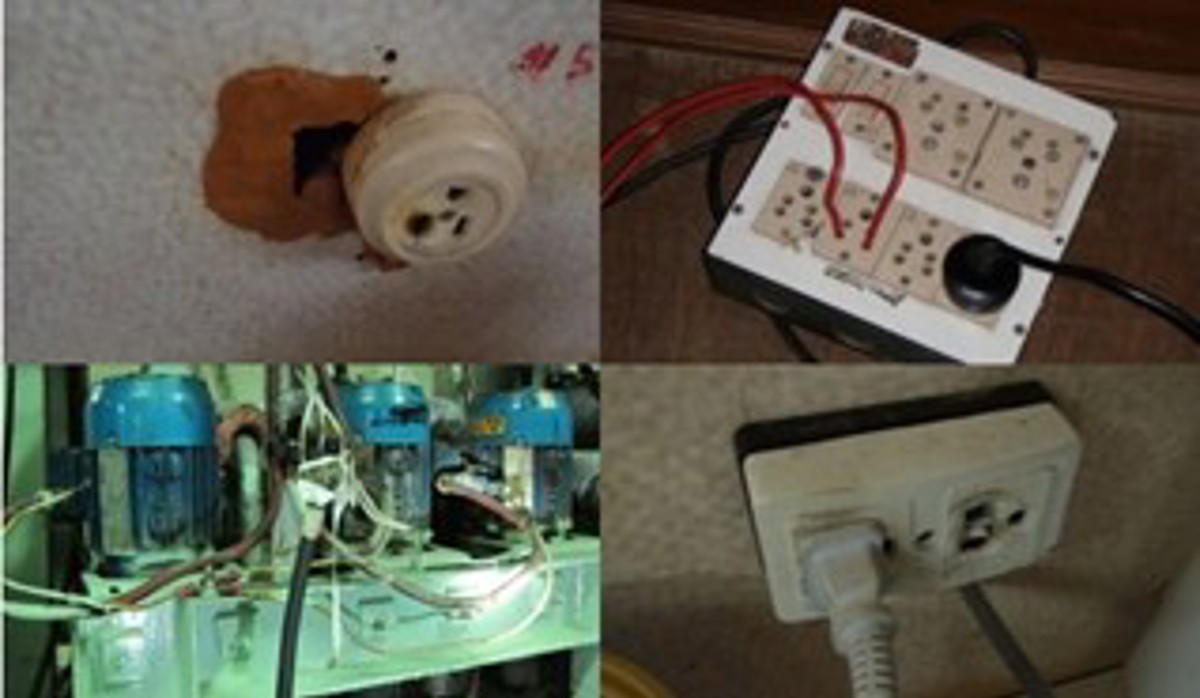Unsafe use of electrical equipment in cabins
- Safety Flash
- Published on 3 July 2025
- Generated on 20 November 2025
- IMCA SF 12/25
- 2 minute read
Jump to:
Crew members were observed inserting 2-pin electrical chargers directly into 3-pin vessel sockets to power their personal equipment.
What happened?
During an inspection of a members’ vessel, crew members were observed inserting 2-pin electrical chargers directly into 3-pin vessel sockets to power their personal equipment in the accommodation. It appeared that there were no appropriate adaptors available onboard.
Inserting 2-pin plugs into 3-pin sockets can physically damage the internal components of the socket. Over time, this may cause loose connections, which are a well-known cause of electrical arcing, overheating, and even fire.

A series of electrical hazards (image from https://www.iims.org.uk/electrical-safety-evaluation-electrical-hazards/)
Why did it happen?
- There were no suitable adapters available onboard.
- An assumption of electrical and physical compatibility between plug and socket types was made.
- There was no awareness of the possibility of mechanical wear or of the possible safety risks caused by mismatched plugs.
What do we learn?
- Ensure there are compatible adapters onboard, as required – Provide safe, good quality plug adapters to prevent mismatched use. Spend a hundred dollars on some adaptors for the crew, possibly prevent a fire in the accommodation.
- Improve crew understanding by providing specific guidance on plug/socket compatibility in electrical safety training/ discussions.
- Have a regular check of sockets in the accommodation for signs of wear, burning, or damage. All electrical appliances should be regularly tested and tagged to confirm they are safe for use.
- Make it easier to for the crew to raise their concerns, than it is to do something unsafe.
Related Safety Flashes
-
IMCA SF 28/21
15 October 2021
-
-
IMCA SF 13/19
4 June 2019
-
-
IMCA SF 29/18
21 December 2018
-
-
IMCA SF 18/18
23 August 2018
-
-
IMCA SF 24/16
20 September 2016
-
IMCA SF 25/23
30 October 2023
-
-
IMCA SF 05/10
28 July 2010
-
IMCA SF 09/22
8 April 2022
-
IMCA SF 19/21
12 July 2021
-
IMCA Safety Flashes summarise key safety matters and incidents, allowing lessons to be more easily learnt for the benefit of the entire offshore industry.
The effectiveness of the IMCA Safety Flash system depends on the industry sharing information and so avoiding repeat incidents. Incidents are classified according to IOGP's Life Saving Rules.
All information is anonymised or sanitised, as appropriate, and warnings for graphic content included where possible.
IMCA makes every effort to ensure both the accuracy and reliability of the information shared, but is not be liable for any guidance and/or recommendation and/or statement herein contained.
The information contained in this document does not fulfil or replace any individual's or Member's legal, regulatory or other duties or obligations in respect of their operations. Individuals and Members remain solely responsible for the safe, lawful and proper conduct of their operations.
Share your safety incidents with IMCA online. Sign-up to receive Safety Flashes straight to your email.